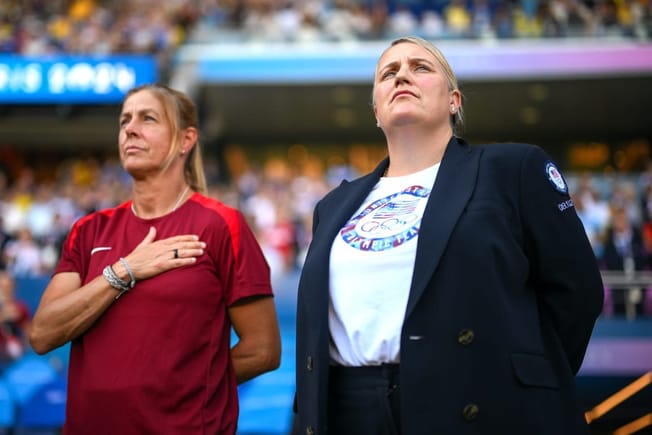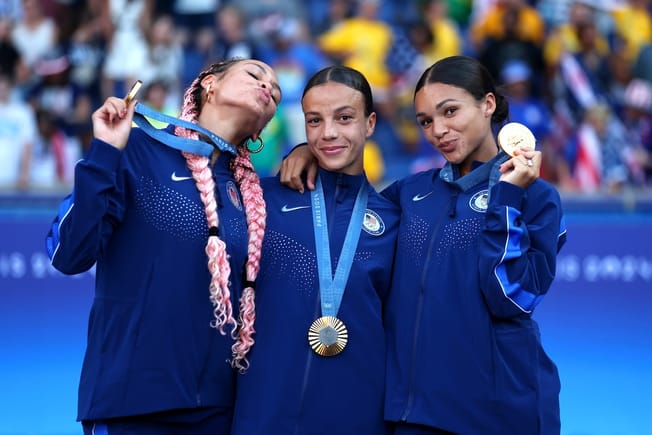There were several points during the U.S. women’s national team’s 1-0 victory over Germany in the Olympics semifinals where I genuinely wondered if all 20 outfield players were going to walk the rest of the game, not unlike a first-time marathon runner who didn’t train properly.
Both squads had played 120 minutes in their quarterfinal matches only 72 hours before. Both squads had to travel hundreds of miles to Lyon, only to play in 90-degree weather before the sun had completely set. Emma Hayes has largely continued her campaign against early, non-injury-related substitutions.
It was rough.
But if the “E” light was blinking on the U.S. dashboard, Germany’s engine finally stalled out. To put the USWNT ahead, Mallory Swanson laced a through ball to Sophia Smith, who used her movement to wrong-side Feli Rauch and smack the shot over an on rushing Ann-Katrin Berger on the half-volley.
The Americans will now face Brazil in Paris on Saturday for the gold medal.
SOPHIA SMITH. RUTHLESS.
— U.S. Women's National Soccer Team (@USWNT) August 6, 2024
🎥 » @TelemundoSports
pic.twitter.com/dS8Y24AXF9
It wasn’t always the most entertaining of games, but plenty of circumstances mitigated that fact — some inside the team’s control, some outside the team’s control. Let’s see how the United States managed to find success despite the players’ extreme fatigue.
Naomi Girma is probably the best center back in the world now.
Ever since Girma made her professional début, her talent has been there for all to see. Two consecutive NWSL Defender of the Year honors and the consensus best player for the U.S. at last year’s World Cup confirms that. But what she is doing at the Olympics has been otherworldly.






